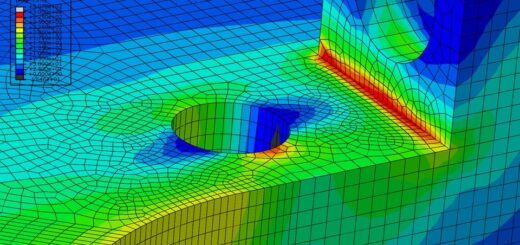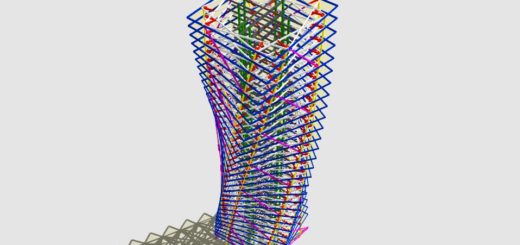Use of AI in Structural Engineering Designs
Artificial Intelligence (AI) has made significant strides in various industries, and structural engineering is no exception. AI techniques have revolutionized the way engineers design and analyze structures, enhancing accuracy, efficiency, and decision-making capabilities. In this article, we will explore the applications and benefits of AI in structural engineering designs, as well as the challenges and future prospects.
Structural engineering involves the design, analysis, and construction of buildings, bridges, and other infrastructure. Traditionally, engineers relied on manual calculations and experience to create safe and efficient designs. However, with the advent of AI, a new era of possibilities has opened up.
AI in structural engineering designs refers to the integration of machine learning, neural networks, and optimization algorithms to assist engineers in various tasks. By leveraging AI techniques, engineers can optimize designs, analyze complex structural systems, and make data-driven decisions.
AI Techniques in Structural Engineering
AI techniques play a vital role in enhancing structural engineering designs. Machine learning algorithms, such as support vector machines and random forests, are used for structural analysis. These algorithms can learn patterns from historical data and make accurate predictions about the behavior of structures under different conditions.
Neural networks, another AI technique, are particularly useful for predictive modeling. By training neural networks on large datasets, engineers can estimate structural responses, such as stresses and deformations, with high precision. Neural networks can capture complex relationships between input parameters and structural performance, enabling engineers to optimize designs efficiently.
Genetic algorithms, inspired by natural evolution, are widely employed for optimization in structural engineering. These algorithms generate a population of potential solutions and iteratively improve them based on fitness criteria. By incorporating safety, cost, and sustainability constraints, genetic algorithms can find optimal designs that meet specific requirements.
Benefits of AI in Structural Engineering Designs
The use of AI in structural engineering designs offers numerous benefits. Firstly, it improves accuracy and efficiency. AI algorithms can process vast amounts of data and perform complex calculations much faster than humans. This capability enables engineers to analyze and optimize designs in a fraction of the time it would take using traditional methods.
Furthermore, AI techniques contribute to significant time and cost savings. By automating tasks such as data processing and analysis, engineers can focus on higher-level decision-making. Additionally, AI-enabled structural analysis and design optimization plays a major role.

AI-Enabled Structural Analysis
One of the key areas where AI is transforming structural engineering is in structural analysis. AI algorithms are capable of automating data processing and analysis, eliminating the need for manual calculations and reducing the chances of errors. By feeding historical data into machine learning models, engineers can train algorithms to recognize patterns and make accurate predictions about structural behavior.
Intelligent pattern recognition is another aspect of AI-enabled structural analysis. By analyzing vast amounts of data, AI algorithms can identify hidden patterns and correlations that may not be apparent to human engineers. This capability allows for a more comprehensive understanding of structural performance and helps in detecting potential issues or anomalies.
AI also enables predictive maintenance and fault detection. By continuously monitoring structural data, AI algorithms can detect early warning signs of structural degradation or faults. This proactive approach to maintenance can prevent catastrophic failures, reduce downtime, and extend the lifespan of structures.
AI-Based Structural Design Optimization
AI techniques have also revolutionized the process of structural design optimization. Generative design algorithms, powered by AI, can automatically generate and evaluate numerous design alternatives based on specified criteria. These algorithms explore a vast design space and provide engineers with optimized design solutions that meet specific performance objectives.
Parameter optimization techniques, such as genetic algorithms, can fine-tune design parameters to achieve optimal results. Engineers can define various design constraints, such as material properties, safety factors, and cost limitations, and let the AI algorithms search for the best combination of parameters.
Moreover, AI-based design optimization takes into account safety and sustainability criteria. Engineers can specify safety requirements, such as load capacities and structural stability, and the AI algorithms can optimize the design accordingly. Similarly, sustainability considerations, such as minimizing material usage or energy consumption, can be integrated into the optimization process.
Challenges and Limitations of AI in Structural Engineering
While the use of AI in structural engineering designs brings numerous advantages, there are also challenges and limitations to consider.
- One significant challenge is the quality and quantity of data. AI algorithms require large and high-quality datasets to learn from. However, obtaining such datasets can be challenging, particularly for niche or unique structural projects.
- Interpretability and explainability are additional challenges. AI algorithms, such as neural networks, are often referred to as “black boxes” because they provide accurate results but lack transparency in explaining how those results are obtained. This lack of interpretability can be a concern when it comes to making critical decisions based on AI-generated outputs.
- Ethical considerations are also important in the use of AI in structural engineering. As AI becomes more advanced, questions arise regarding the responsibility and accountability of AI systems. Ensuring ethical use, preventing biases in algorithms, and maintaining human oversight are crucial aspects that need to be addressed.
Future Trends and Opportunities
The future of AI in structural engineering looks promising, with several trends and opportunities on the horizon. One trend is the integration of AI with other emerging technologies, such as the Internet of Things (IoT) and big data analytics. By combining AI with sensor data from structures, engineers can have real-time insights into structural performance and make data-driven decisions.
Augmented reality (AR) and virtual reality (VR) applications also offer exciting possibilities. Engineers can use AR and VR to visualize and simulate structural designs in a virtual environment, allowing for better collaboration and improved design validation before construction begins.
Advancements in robotic construction present another opportunity for AI in structural engineering. Robots equipped with AI algorithms can assist in complex construction tasks, such as assembling intricate structural components or performing quality inspections. This integration of AI and robotics streamlines the construction process and enhances efficiency.
The use of AI in structural engineering designs has revolutionized the field, enabling engineers to create safer, more efficient structures. AI techniques, such as machine learning, neural networks, and optimization algorithms, have improved accuracy, efficiency and decision-making capabilities. AI-enabled structural analysis automates data processing, identifies patterns, and enables predictive maintenance and fault detection.
AI-based structural design optimization utilizes generative design algorithms and parameter optimization techniques to generate and evaluate design alternatives. Safety and sustainability criteria are incorporated into the optimization process, resulting in optimized designs that meet specific performance objectives.
However, the implementation of AI in structural engineering does come with challenges and limitations. Obtaining high-quality and sufficient data can be a hurdle, and ensuring the interpretability and explainability of AI algorithms is crucial. Ethical considerations, such as bias prevention and human oversight, must also be addressed.
Looking ahead, the future of AI in structural engineering holds exciting prospects. Integration with IoT and big data analytics allows for real-time insights into structural performance. Augmented reality and virtual reality applications enhance collaboration and design validation. Advancements in robotic construction offer the potential for more efficient and precise construction processes.
In conclusion, the use of AI in structural engineering designs has transformed the industry by enhancing accuracy, efficiency, and decision-making. While challenges and limitations exist, the future holds great promise for AI integration with other technologies and the continued advancement of structural engineering practices.
FAQ
- How does AI improve structural engineering designs? AI improves structural engineering designs by automating data processing, enabling predictive maintenance, and optimizing designs for safety and performance.
- Can AI completely replace human engineers in structural design? No, AI cannot replace human engineers in structural design. AI is a tool that assists engineers by automating certain tasks and providing valuable insights, but human expertise and creativity are still essential.
- What are the ethical implications of using AI in structural engineering? Ethical implications include ensuring unbiased algorithms, addressing privacy concerns with data collection, and maintaining human oversight to prevent overreliance on AI systems.
- Are there any limitations to the use of AI in structural analysis? Limitations include the need for high-quality data, challenges in interpreting AI algorithms, and potential biases in the results generated by AI systems.
- What are the future prospects for AI in structural engineering? The future prospects for AI in structural engineering include integration with IoT and big data analytics, augmented reality and virtual reality applications, and advancements in robotic construction, among others.



